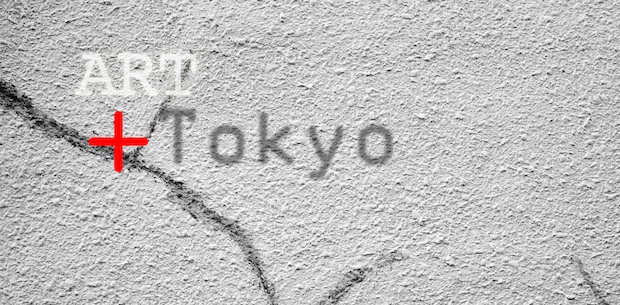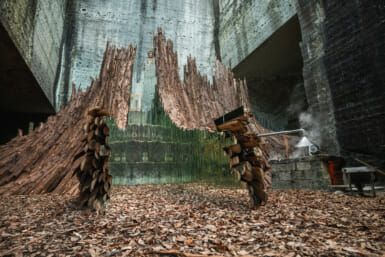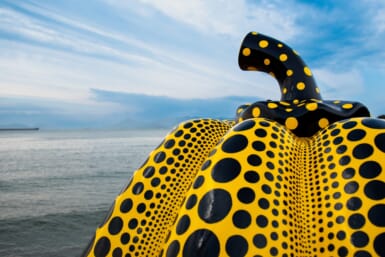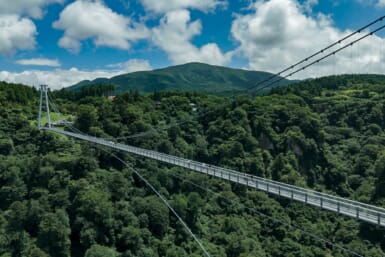Maybe one day I’ll turn up at a an Olafur Eliasson show and fail to be surprised. But not today.
I thought it might have happened when his show at the 21st Century Museum of Contemporary Art in Kanazawa opened up with a design crossover effort, the Starbrick. While the stackable light fixtures are clever and unusual, they are, let’s face it, pretty gosh darn ugly, and just didn’t feel up to the Danish-Icelandic artist’s usual par.
But after I’d been through his room that made everything inside it turn colourless, including the viewers; a second that was a three-dimensional spectrum in smoke; and a circular room with a single quivering horizon-line of light reflected from a pool of water, my faith was restored. It was an incredible show.
The Starbrick has still managed to find its way into Gallery Koyanagi‘s tiny exhibition titled “Feeling Things,” but it can be forgiven. There are far more interesting things here to focus on.
“Feeling Things” is an odd title for an Eliasson show, since he is above all else, a purely visual artist. In fact it is light, reflection and colour that drive most of his work. Eliasson sculpts with light, often in installations that rely on audiences moving through them.
Two of his Slow Motion Shadow works, here, are typical of this type of simple light sculpting. Eliasson shines a row of high-powered spotlights at one wall of the gallery, where they cast multiple shadows of passing viewers. And the effect does seem to slow the shadow down, as though it were a split second behind your own movements. It’s an illusion, of course; a parlour trick. Yet, as with much of Eliasson’s work, it’s a trick that reveals that seeing is not as direct a process as we imagine it to be day to day. We understand perfectly every part of the process of putting together the work, and yet there is an unexpected strangeness in the result.
In the back of the gallery, there is a set of photographs which he has called Compass Rocks. Eliasson has photographed two roughly cubic boulders from the eight compass points, arranging the prints in a corresponding square. We see the stones from all sides simultaneously, but still struggle to put the picture together in three dimensions.
But it is a film work — something I’ve never seen from Eliasson before — that really makes the show worth attending. The basic idea behind the brand-new piece, Innen Stadt Außen (Inner City Out) is simple: take a truck, strap an enormous mirror to one side, then drive it around the city and film it from different angles.
Eliasson starts out with still shots, scenes where we can’t really be certain of where the mirror is until a passerby steps behind it or a car drives in front. In one scene, we see leafless trees waving slightly in the background: nothing strange, until a passing bus begins to bend unnaturally, revealing that the entire shot has been framed in the slightly warped mirror.
Slowly things begin to move. Eliasson takes advantage of our familiarity with video panning and transitioning techniques, and it frequently feels as though the film is moving from one scene into another, until we catch the corner of the mirror or the illusion is broken by a glimpse of the truck itself. There is no real attempt to hide what is happening, but the cuts and movements build up, quickly becoming so fast and strange that we give up trying to discern the real from the reflected. The film goes from static images, to straight lines, to turns and curves, culminating in a surreal, and somewhat nausea-inducing, trip around a traffic circle where nothing seems real. (I somehow doubt that nausea was the “feeling” that Eliasson was trying to make his audience feel. But then again…)
There are no tricks, no special effects. Just a huge mirror and careful editing. And the result is that by the end of the film, real and reflection no longer matter. It is only a collision and parting of images and light. Eliasson may have moved out of his medium a little, but he’s still strongly in his element.
-Owen Schaefer
Twitter
Photographic Prints









